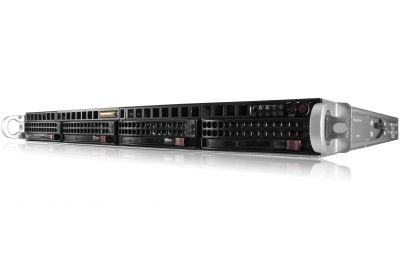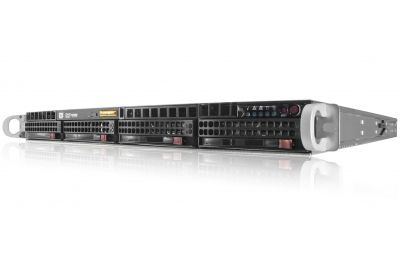SAS and SATA represent two newer technologies branching from older SCSI and IDE interfaces. While both drives use the same data channel, a SAS drive would not work on a controller specifically designed for a SATA drive. Since SAS hard drives have a unique power/data fused connector, SAS drives are unable to work with SATA connectors. However, a SATA drive is able to operate on a SAS controller interface.
SAS and SATA offer very unique benefits and the need for one or the other largely depends on the task a server is to perform. The primary difference between SAS and SATA is speed; specifically the speed of drive spindle at the mechanical level. SAS drives spin upwards of 15,000 rpm making data transfer speeds incredibly fast. At a practical level, this means that SAS drives are perfect for the large datacenter environments where data access must be as quick as possible.
SATA drives offer benefits in storage space rather than speed. These drives offer up to 2 TB of storage space at a relatively fast data transfer rate. In any case where large storage space is needed, SATA definitely is more beneficial than SAS. Any type of large file server, for instance, would benefit from SATA drives over SAS due to the sheer size of the arrays capable with SATA.
There are also alternatives to the relatively new and expensive SAS drives. The Western Digital Velociraptor drives offer 150 or 300 GB of storage with 10,000 rpm spin speeds. Velociraptor drives offer a great intermediate option for infrastructures not ready for the new SAS interface. Solid state drives offer even faster speeds with similarly low storage options. These types of drives benefit the user specifically because they use the standard SATA connections, giving the added benefit of using fast storage on older hardware.
| SATA | Serial Attached SCSI | |
|---|---|---|
| Acronym for | Serial ATA or Serial Advanced Technology Attachment. | Serial Attached SCSI (pronounced "scuzzy") or Serial Attached Small Computer System Interface. |
| Advantages | Inexpensive, large storage capacity. | Fast data transfer rate, higher MTBF than SATA (1.2 to 1.6 million hours of use at 45 °C), longer cables, sometimes higher rpm. |
| Disadvantages | Lower MTBF than SAS (700,000 hours to 1.2 million hours of use at 25 °C), less suited for servers. | Expensive, less storage capacity, uses more power to operate |
| Speed | Data transfers at the rate of up to 6 Gb/s | Data transfers at the rate of up to 6 Gb/s, but generally faster than SATA |
| Data cable | Narrow, can be up to a meter (roughly 3ft) long. Power and data split into two connections. | Can be up to 10m (33ft) long. Power and data fused into one connection. |
| Uses | Personal computing, storage. | Enterprise, servers. |





